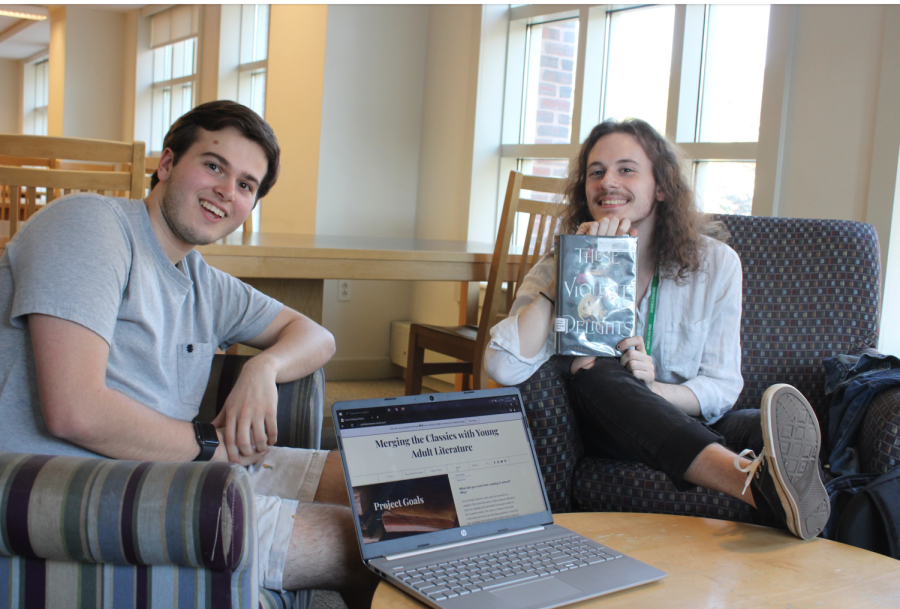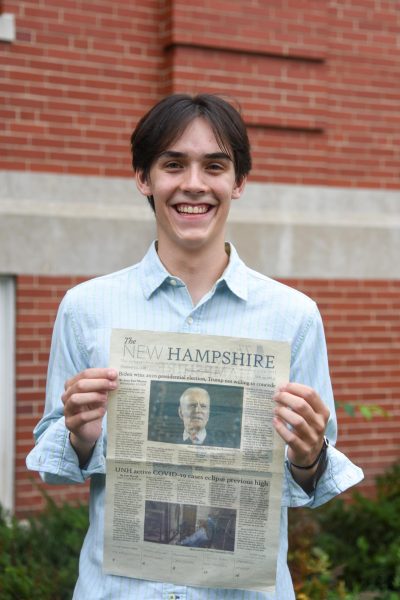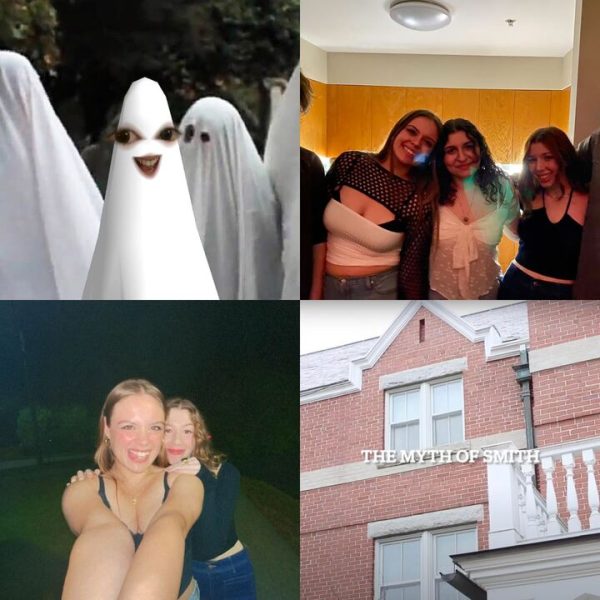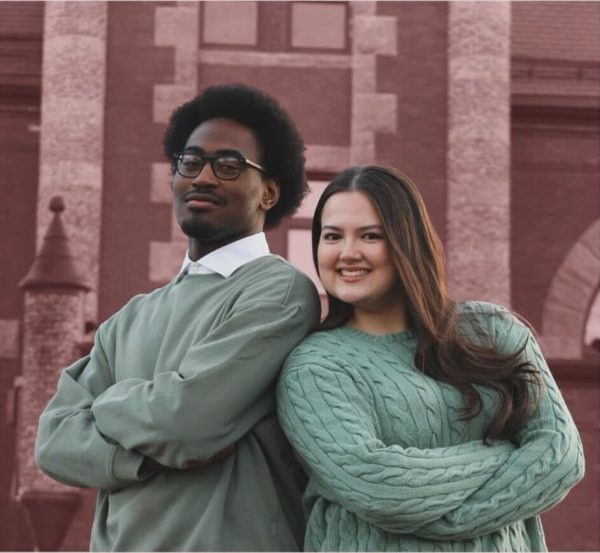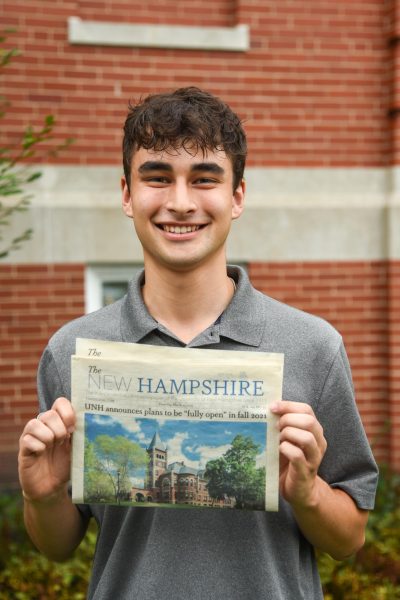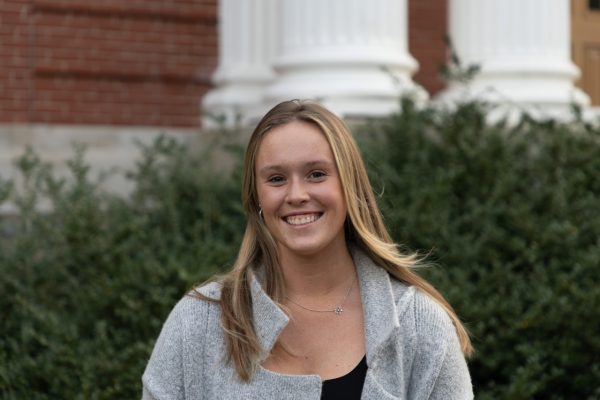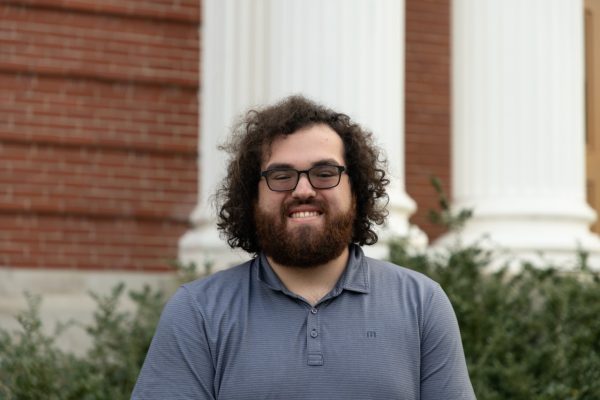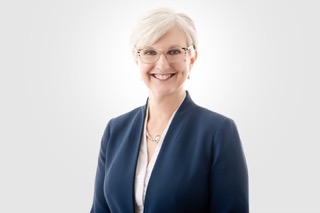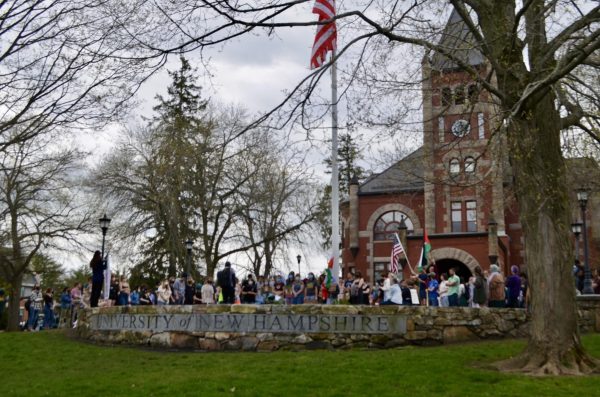UNH students present a theoretical alternative to learning in academic settings
“We hope to inspire educators to take similar steps in making classics more accessible to their students”
Blake Bolduc (left), and Cameron Adams (right), posing with their project, along with a book titled “These Violent Delights” by Chloe Gong that was featured on the group’s “Book Blog.”
April 21, 2023
DURHAM — Six UNH students created a website equipped with lesson plans, a book blog and a theoretical overview of their visions for academic settings to implement blended classrooms in teaching literature to young readers.
Their website, titled “Merging the Classics with Young Adult Literature,” was presented by UNH student group members Blake Bolduc and Cameron Adams, as a part of their “Live Free and READ! How Stories Set You Free” presentation, at the “Live Free Symposium,” on April 7. Other group members who worked on the website include: Audrey Kenison, Seamus Baker, Emma Knowles and Emilia Willett.
The “Live Free” symposium, sponsored by the College of Liberal Arts Global Racial and Social Inequality Lab (GRSIL) and the New Hampshire Humanities Collaborative, took place in the Hamilton Smith building at the University of New Hampshire (UNH). According to GRSIL, the key element of this event was creating different projects on the meaning of being “free.”
“One of the main topics that we [the project group] got on with [for the symposium] was students having the freedom to choose what they want to read,” said Adams. Adams is a third- year English teaching and classics double major.
The literary canon consists of literature commonly taught in academic settings, such as F. Scott Fitzgerald’s “The Great Gatsby,” J.D Sallinger’s “The Catcher in the Rye” and George Orwell’s “1984.”
The website has a section that describes the groups “project goals,” and states that “the [literary] canon is without a doubt still worth studying and can be an enriching experience to read.” The group then begs the question of “how enriching” it can truly be “when readers have no choice in what they read and are often unprepared to parse outdated language.”
“I have personally been a fan of classics…but I have two younger siblings and they are definitely the complete opposite way,” said Bolduc. Bolduc is a third-year English teaching major who is pursuing a double minor in writing and history.
One of the main messages of the project is that teaching more updated books can relay messages that are more relevant and resonate with students.
“While we [English teaching majors] love to read books like “The Great Gatsby,” a lot of students don’t.” Therefore, the ability for students to read a book similar to one within the literary canon, and “Still get something out of it–like the love for literature is what we want to do,” said Bolduc.
For implementing their ideas within academic settings, the group proposes a “blended classroom,” or a “Model of teaching where the classics and their themes are taught by the teacher while the students read the books that they love, typically Young Adult literature, and engage in looking for the same merits of classic literature with their chosen book,” as stated on the group’s site.
When detailing the group’s vision of a blended classroom, Bolduc referenced George Orwell’s “1984.” “Everyone still talks about ‘Big Brother.’ It’s even a TV show, so people should know where that [reference] came from. But, not everyone needs to read “1984” because it’s got a lot of archaic language, and a lot of weird plot points.” Bolduc then explained that students could potentially “still enjoy,” and understand the themes of a book in the literary canon by analyzing its quotes, while reading more contemporary books with parallel messages such as “The Hunger Games.”
One of the group’s perspective lesson plans included pairing “The Great Gatsby” with the graphic novel version. On the website’s page titled “Lesson Plans,” group member Ella Knowles states, “A graphic novel pairing helps students visualize the plot events of the story, so they can focus on the invaluable experience of reading a beautiful piece of writing.”
“Bringing that very easily accessible format to less accessible texts is a very excellent way of bringing classics to kids,” said Adams. “If a novel is full of pictures, that is potentially more immediately inviting.”
The group included a “Book Blog” section on their website. The blog includes a variety of suggested YA literature for educators to pair with books within the classical literary canon. The blog’s introduction ends with the statement “We hope to inspire educators to take similar steps in making the classics more accessible to their students.”
Adams and Bolduc presented at the “Live Free” symposium in wake of recent movements to ban certain literature in schools.
The sentiment that “Everyone should have the ability to read [classical literature] does not mean that everyone should love the literature, but they should be able to read it,” said Bolduc.
Adams and Bolduc both plan on implementing their ideas of merging classical literature with the young adult genre in their future careers in English teaching.
“The idea of a blended classroom…is something I would totally want to start out the gate with as a teacher. Implementing a blended classroom, “is a system that is a lot more revolutionary than what we’re seeing” in current academic settings. “I think that [implementing the ideals of the project] would work for both my interests and what I think students would like,” said Bolduc.
Our ideas would be “very cool to apply,” as a teacher by making learning “more relatable, and a little bit more accessible” to students. “I’d definitely be interested in continuing the concepts that we’ve covered in our project,” Adams highlighted in his future career plans of becoming a teacher.




















